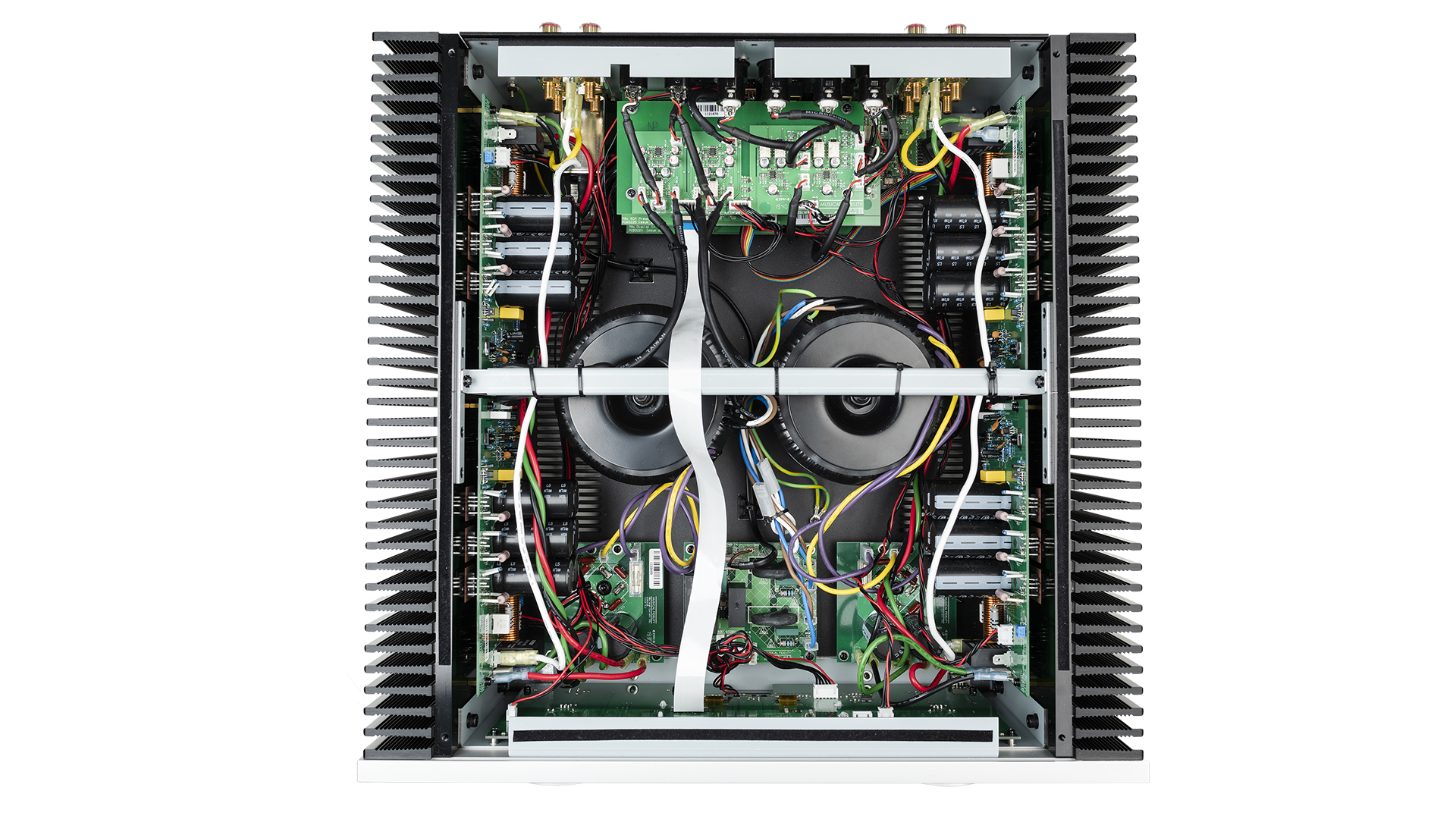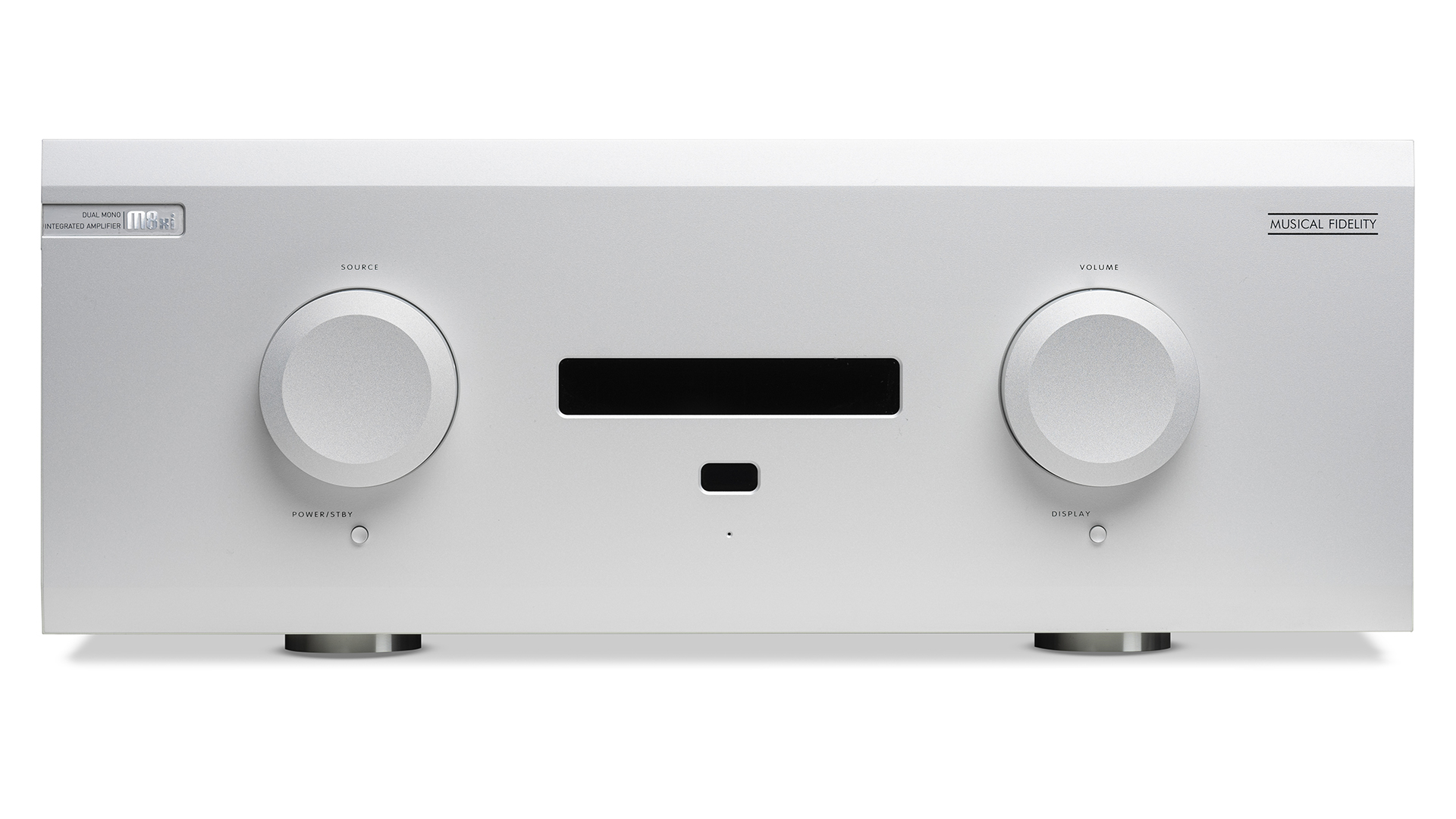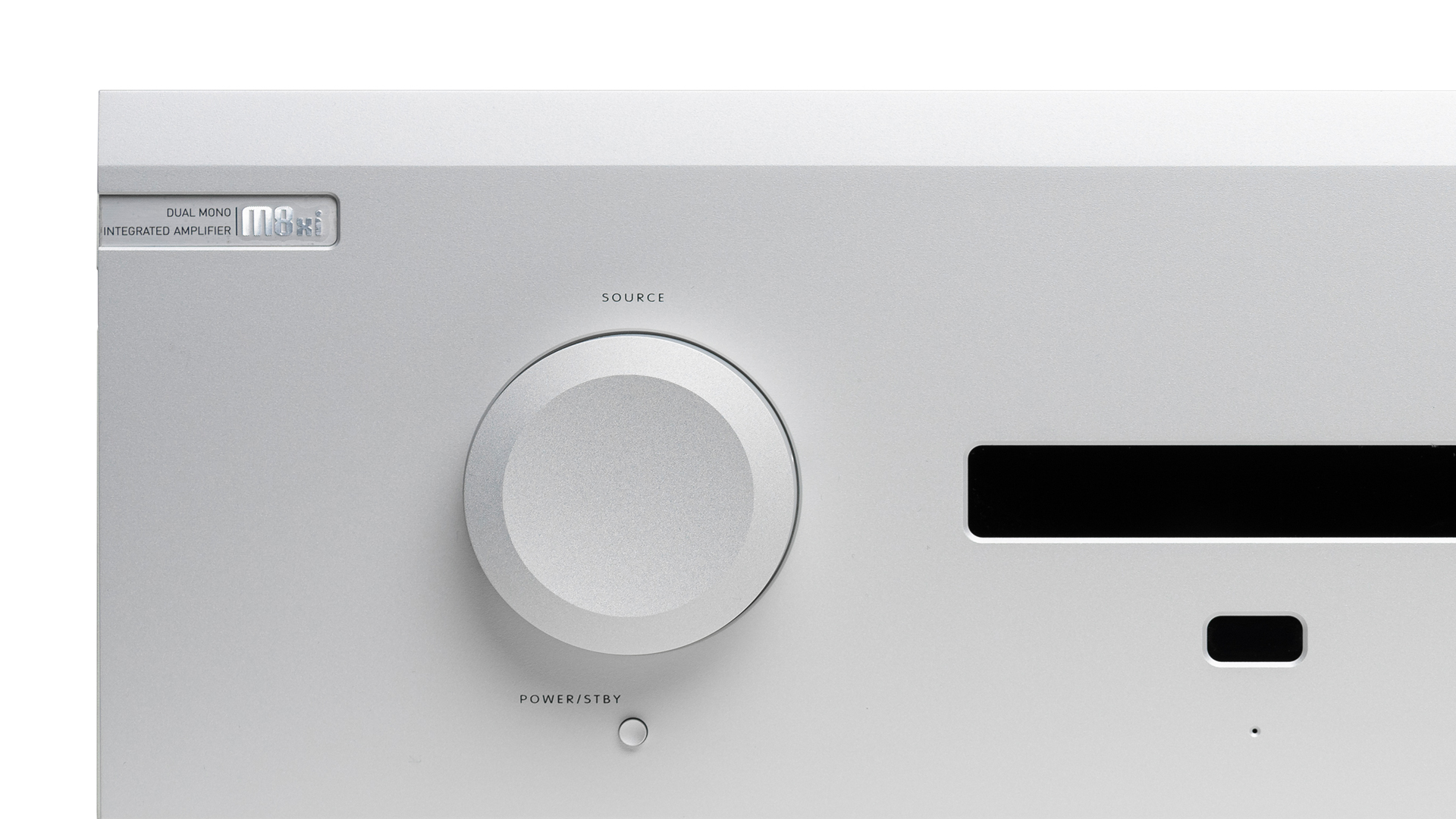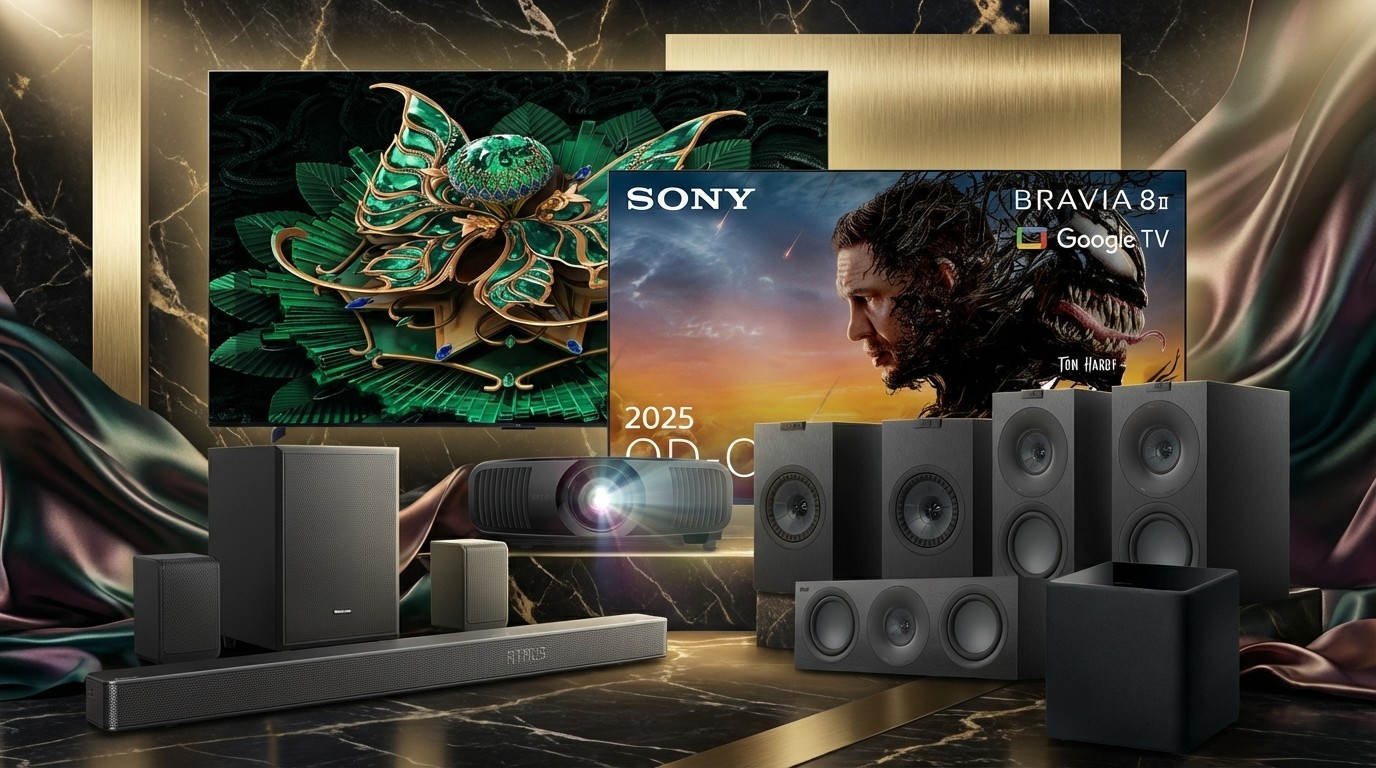What Hi-Fi? Verdict
The M8xi is a monster integrated in most ways but satisfies musically too
Pros
- +
Entertaining presentation combining muscularity and clarity
- +
Huge power output
- +
Good onboard DAC
Cons
- -
Huge and heavy
- -
Runs warm
- -
No phono stage or headphone output
Why you can trust What Hi-Fi?
There’s no two ways about it, Musical Fidelity’s M8xi is something of a monster. The integrated amplifier dwarfs most rivals when it comes to size and weighs in at a vertebrae-crushing 46kg. Perhaps the most impressive number is that it has a huge claimed power output of 550 watts per channel in 8 ohms, which then rises to a dizzying 870 watts as the speaker impedance halves.
The M8xi is a poke in the eye for anyone that considers an integrated amp a compromised alternative to a pre/power combination. Inside the Musical Fidelity’s huge frame – 16 x 44 x 40cm (hwd), in case you were wondering – is very much a modular design with DAC, preamp and two monobloc power amplifiers separated as much as possible with the casework.
Build

This Musical Fidelity is a solidly built unit that’s finished to a high standard. We love the simplicity of its major controls, though the display could be a little larger to make it easier to read from a distance or at an angle. Take a look inside and you’ll find two sizable toroidal mains transformers, and obvious care has been taken to avoid interactions between the various analogue and digital circuits inside the product. It’s not as neatly arranged or visually appealing as the insides of high-end products can sometimes be, but that’s not an issue as long as it performs well and reliably. The M8xi runs warm, too, so ventilation becomes an issue if overheating isn’t to become a problem.
There’s plenty of connectivity here. The digital-to-analogue section is based around the Texas Instruments PCM5242 DAC chip and offers five inputs (USB type-B, two coax and two optical) and, more unusually, digital outputs in the form of an optical and coax.

Power Output 550W per-channel (8Ω), 870W (4Ω), Peak 1.6kW (2Ω)
THD (+noise) <0.004% typical, 20Hz to 20 kHz (XLR)
Signal to Noise Ratio > 86dB 'A'-weighted (XLR)
Frequency Response +0 , -1dB, 10Hz to 100 kHz
Inputs 4x RCA, 2x XLR, 2x coax S/PDIF, 2x optical S/PDIF, USB type-B Asynchronous
Outputs 1x RCA fixed, 1x pre-out RCA variable, 1x XLR variable, 1x coax S/PDIF, 1x optical S/PDIF
Dimensions (hwd) 184 x 483 x 510mm
Weight 46kg
Those who judge things by specs are unlikely to be impressed by the Musical Fidelity’s relatively modest 24-bit/192kHz resolution ceiling through USB and coax. As is common, the optical input takes that down to 24-bit/96kHz. It’s not hard to find budget outboard DACs that handsomely exceed the M8xi’s resolution limits while adding DSD compatibility into the bargain. That said, we don’t think this will be a deal-breaker for most people; this integrated will still play the vast majority of music files available.
Analogue fans have two sets of balanced XLR line-level inputs along with four single-ended RCA options. There are both balanced and single-ended preamp-out options, though why anyone would feel the need for more power isn’t quite clear to us. The list is completed by a single-ended line-out and a switchable 'AUX 2' input that can be configured to bypass the M8xi’s preamp section and feed directly straight into that muscular power amp circuitry.
It’s a bit of a surprise that Musical Fidelity has omitted a phono stage from this design, as such a circuit has become an increasingly common inclusion in recent high-end integrateds we’ve tested. There’s no headphone output either.
The latest hi-fi, home cinema and tech news, reviews, buying advice and deals, direct to your inbox.
Of course, both a phono stage and headphone driving ability can be added with outboard units, but that’s not the point. After all, part of the appeal of integrated amplifiers is that they pack everything in one box and so excluding such functionality makes less sense in this context.
Sound

Any amplifier at this level needs a top-class system to shine. We use our usual Naim ND555/555 PS DR music steamer and Technics SL-1000R record player as sources. As the M8xi doesn’t have a phono stage, Vertere's award-winning Phono-1 is pressed into service. At the other end of the signal chain we have our reference ATC SCM50 speakers alongside the Dynaudio Confidence 20 and a pair of ProAc Response D2R, just to see how the M8xi performs with different speakers.
Given the amplifier’s prodigious power output, it doesn’t come as any surprise to find that it drives all three speaker options with ease and delivers huge volume levels with considerable composure. Rarely do we hear an integrated at this level that sounds so controlled and unstressed.
We love what all that power means for the bass too. Listening to Massive Attack’s rather under-rated Heligoland set, we’re impressed by the M8xi’s grip and authority at low frequencies. It kicks hard when the music demands, but just as pleasingly delivers the notes with agility rather than droning on. Normally such a muscular amplifier would fall down on rhythmic drive, but that’s not the case here – the Musical Fidelity delivers Atlas Air with both determination and momentum.
Its midrange is good too. This region is clean, clear and rendered with a solid amount of detail. Voices come through crisply and remain easy to follow even when the music gets busy. This is not the amplifier to buy if you’re after the last word in texture and finesse – there isn’t quite the dexterity for that – but we suspect that the M8xi is still likely to satisfy all but the most critical listeners in these respects.

We switch to Mahler’s Symphony No.2 and this musical beast is right at home. It sounds massive, rendering an expansive but nicely focused soundstage. It’s an open and stable presentation where instruments are locked in position and never waver, even when the music becomes demanding.
Given the Musical Fidelity’s reserves of power, it would be surprising if dynamics weren’t excellent. And they are. This amplifier punches out large-scale dynamic swings with skill and also manages to communicate nuances with the finesse they deserve.
There’s a good level of insight here, and the ability to track low-level instrumental strands without losing sight of the whole. The M8xi is a thrilling listen with appropriate music, delivering all the drama packed into the original performance.
Tonally things are even enough to give us convincing results across a wide range of instruments. If you hear an M8xi sound a little bright and edgy in the higher frequencies it probably hasn’t had time to warm up properly or is poorly matched with the speakers. Our sample sounds pretty even-handed given a few days of use.
We try the amplifier’s digital inputs and are pleased with what we hear. Despite the less-than-stellar specs, this is a good-sounding digital module that’s broadly on par with some of the better three-figure outboard DACs on the market. We use our MacBook (loaded with Audirvana playback software and lots of high res music) and a Cyrus CDi CD player as digital sources and find the M8xi refreshingly consistent between inputs, taking into account the differing quality of the sources of course.
The amplifier’s sound retains the lively and entertaining quality of the analogue line stages, which is more than can be said of many of the built-in DACs we normally come across. We listen to a whole raft of music from the likes of Bruce Springsteen and Miles Davis to Eminem, and the M8xi never lets us down, rendering the sound with verve, insight and a physicality that is mighty appealing
Verdict

The M8xi has power to burn and that shines through in its muscular and authoritative nature. You can throw pretty much anything at this amplifier and it’ll never seem out of its depth, yet beneath all that muscle is a product that has enough emotional stretch to satisfy across a wide range of musical genres. The Musical Fidelity M8xi definitely belongs on the shortlist.
SCORES
- Sound 5
- Build 5
- Features 4
MORE:
Here's our round-up of the best integrated amplifiers
Read our review of the PMC Cor
Read our review of the Copland CSA 100
Read our review of the Krell K-300i
What Hi-Fi?, founded in 1976, is the world's leading independent guide to buying and owning hi-fi and home entertainment products. Our comprehensive tests help you buy the very best for your money, with our advice sections giving you step-by-step information on how to get even more from your music and movies. Everything is tested by our dedicated team of in-house reviewers in our custom-built test rooms in London, Reading and Bath. Our coveted five-star rating and Awards are recognised all over the world as the ultimate seal of approval, so you can buy with absolute confidence.

